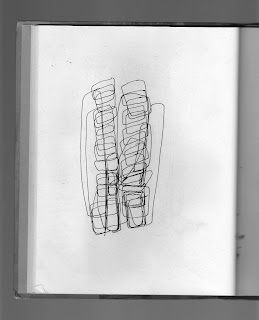Over the weekend I attended an artist conversation with Vernon Ah Kee,
an Indiginous Australian artist of Malaysian background at Art Atrium, hosted by
gallery director Simon Chan and moderated by Imogen Yang,
one of the curators along with Djon Mundine OAM. The topic of this conversation was an emboldened perspective on the aspect of Indigenous Australian art from artists with an Asian ethnic background.
Today the Australia Council for the Arts hosts *samag - Seminars for Arts Professionals, with a compelling panel featuring Aaron Seeto,
the Director of 4A Centre for Contemporary Asian Art, Dr Thomas Berghuis, a lecturer in Asian Art at the Department of Art History & Film Studies
at the University of Sydney, Paschal Daantos Berry,
an independent Filipino/Australian writer and dramaturg whose practice is focused on interdisciplinary, cross cultural and collaborative processes, Lorraine Chung, Translator/Project Assistant
at Gallery 4A, and Su-wen Leong,
a COFA artist and arts administrator assisting the Curatorial Department at Object Australian Centre for Design.
The resounding themes of the two talks are the struggles of artists in Australia from other ethnic backgrounds, whether it be the exclusion of an aboriginal heritage or the hurdles of finding immigration opportunities to stay after graduating with an academic degree or upon expiration of a working holiday visa.
The focus of much of the conversation centered around the Australian white paper, "Australia in the Asian Century", available on the Australian Government Asian Century
website. The panel at one point cautioned the audience when looking at Asia as a "resource", which is often how the white paper defines the Australian/Asian relationship and the opportunities that lie ahead.
The most controversial statement made by the panel may have been from Thomas Berghuis when he said "The 20th Century was the Asian Century", not the 21st Century as the white paper claims. In the questions and answers following the panel Thomas defended his statement "The 20th Century was the Asian Century" and evoked a great chorus of clarifying statements from the panel.
Thomas mentioned research at Harvard like that of Tarun Khanna,
Jorge Paulo Lemann Professor at Harvard Business School on the Indian and Chinese economic powers. Thomas stressed an emphasis on the 500 million people taken out of poverty in Asia in the 20th Century.
Aaron Seto adds that most of the work to create the Asian Century was done in the 20th Century. The mid to late 19th Century saw a great flood of immigrants out of Asia, and the 1901 immigration act restricting that immigration. The fall of Saigon and decolonisation of South East Asia and other cultural and historical changes laid the foundation for what the white paper so aptly defines.
Paschal confirmed "Australians are the new Americans", as spoken by his Filipino audience on his travels to the Philippines. He explained this means that the wealth and influence in the region, whilst of American origins in the 20th Century, comes more noticeably from Australian business and governmental influence in the new millenium.
Lorraine added that she chose to study in Australia and not the United States where she grew up because of her belief that Australia is the up and coming, a Western power to rise from the Asian conflicts of the 20th Century. Starting from its inexplicably low status in the global stage during the 20th Centuray, Australian influence in the 21st has plenty of room to grow and be noticed in its influence as a prosperous European chaperone.
Later from Pedro de Almeida,
Program Manager at 4A Centre for Contemporary Asian Art, the question was posed "What must Australia do with its focus on Asian art to bring the cultural rise into an approchable format?" The panel answered with their own examples of past curatorial choices that set this example, and ideas of what can be done in the future, naming specific artists and these artists' own take on the communication of the pressing issues around the Asian cultural influence that is on the hearts and minds of the international audience, attracted to this event hosted by *samag at the Australian Council for the Arts.

On a personal note relating to the confusion of Asian cultural identity, I can't help but think of my friend and classmate from Duke University, Pete Ortiz, when in a discussion about finding a partner of your similar ethnic background he said, "I don't meet many Japorican women." His mother is Japanese and his father is Puerto Rican, and he grew up in the military outpost of Fayetteville, North Carolina, working in his mother's noodle shop. God bless you, Pete ;)
No comments:
Post a Comment